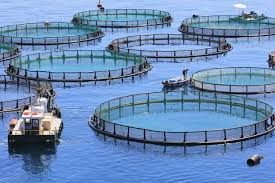CHAPTER 2 : THE TRANSFORMATION OF AGRICULTURE
There are 3 steps in evolution of agriculture which are :
1) Prehistoric Era
Three great ages of prehistoric time which are stone age , bronze age and iron age.


- The Stone Age is a broad prehistoric period during which stone was widely used to make implements with a sharp edge, a point, or a percussion surface.
- The Stone Age is the first of the three-age system of archaeology .

- Bronze is an alloy of copper and tin that is more hard than either pure copper or tin. In addition, bronze has a lower melting point than copper or tin making it easier to form into finished shapes by moulding, casting, or machining. While a harder metal, bronze still did not break easily under stress and was corrosion resistant. Bronze was better suited for weapons and tools than either copper or tin.

- Iron age may be defined as including the last stages of the prehistoric period and the first of the protohistoric periods.
- The Iron Age is characterized by an elaboration of designs in weapons, implements, and utensils.
- These are no longer cast but hammered into shape, and decoration is elaborate curvi linear rather than simple rectilinear .
Farming in the Middle Ages was very backward. Farmers did not know how to enrich the soil by the use of fertilizers or how to provide for a proper rotation of crops. Farm animals were small, for scientific breeding had not yet begun. A full-grown ox reached a size scarcely larger than a calf of to-day, and the fleece of a sheep often weighed less than two ounces
Farm tools and implements were few and clumsy. The wooden ploughs only scratched the ground. Farrowing was done with a hand implement little better than a large rake. Grain was cut with a sickle, and grass was mown with a scythe. It took five men a day to reap and bind the harvest of two acres.
3 ) Modern Agriculture
In modern agricultural systems farmers believe they have much more central roles and are eager to apply technology and information to control most components of the system, a very different view from that of traditional farmers. In contrast to the isolation inherent in traditional arrangements, modern agriculture tends to see its success as dependant on linkages—access to resources, technology, management, investment, markets and supportive government policies.
- Two goals of modern Agriculture systems
- To obtain highest yields possible
- To get the highest economic profit possible
Green Revolution
The Green Revolution was a period when the productivity of global agriculture increased drastically as a result of new advances. During this time period, new chemical fertilizers and synthetic herbicides and pesticides were created. The chemical fertilizers made it possible to supply crops with extra nutrients and, therefore, increase yield. The newly developed synthetic herbicides and pesticides controlled weeds, deterred or kill insects, and prevented diseases, which also resulted in higher productivity.
Benefits of the Green Revolution
- To produce much larger quantities of food.
- To feed the growing human population.
- To reduced production costs and also resulted in cheaper prices for food in the market.
BLUE REVOLUTION
The term "blue revolution" refers to the remarkable emergence of aquaculture as an important and highly productive agricultural activity. Aquaculture refers to all forms of active culturing of aquatic animals and plants, occurring in marine, brackish, or fresh waters.





No comments:
Post a Comment